Walking into a store with well-organized aisles, clear signage, and helpful staff makes shopping a breeze. You find what you need quickly, enjoy the experience, and might even tell your friends about it. A website should offer the same ease and satisfaction. Search engine optimization (SEO) and user experience (UX) are the keys to achieving this digital harmony. When these elements work together, they not only draw visitors in but also keep them engaged. So, how do SEO and UX intersect, and why is their relationship so important? Let’s explore!
What is User Experience (UX)?
User experience encompasses all aspects of a user’s interaction with a product, system, or service. It’s about creating an intuitive, efficient, and pleasant journey for the user. From the layout and design to the ease of navigation and content relevance, UX aims to meet the user’s needs and expectations seamlessly. Good UX is achieved by understanding user behavior, preferences, pain points, and designing solutions that enhance their overall satisfaction and engagement.
How Do User Experience and SEO Correlate?
SEO and user experience might seem like separate disciplines, but they’re more intertwined than it may appear. SEO focuses on optimizing a website to rank higher on search engine results pages (SERPs), aiming to drive organic traffic. Meanwhile, UX aims to ensure that once users land on a site, their experience is smooth, engaging, and valuable.
When a website provides a great user experience, visitors are likely to spend more time on it, explore more pages, and engage with the content. These user behaviors send positive signals to search engines, indicating that the site is valuable and relevant. Conversely, a site with poor UX can lead to high bounce rates and low dwell times, negatively impacting its SEO performance.
How Does User Experience Affect SEO?
Several UX elements directly influence SEO. Search engines, particularly Google, prioritize user-centric metrics when determining rankings. Here are key aspects where UX affects SEO:
Page Load Speed: Fast-loading pages improve user satisfaction and reduce bounce rates. Google considers page speed a critical ranking factor. After all, users don’t want to wait around for your site to load when they can go to a competitor’s site for a speedier experience.
Mobile-Friendliness: With the majority of users accessing the web via mobile devices, responsive design is crucial. Google’s mobile-first indexing means it primarily uses the mobile version of a site for ranking and indexing.
Navigation and Structure: Intuitive navigation helps users find information quickly, reducing frustration and improving dwell time. Clear site structure aids search engines in crawling and indexing the site efficiently.
Content Quality and Relevance: When users access your site, they’re looking for a solution to their wants or needs. High-quality, relevant content keeps users engaged. Search engines reward sites that provide valuable content that meets user intent.
Interactivity and Engagement: Features like comments, reviews, and interactive elements enhance user engagement, signaling to search engines that the site is active and useful.
SEO and User Experience Best Practices
To harness the synergy between SEO and UX, here are some best practices to follow:
Optimize for Speed
Ensure your website loads quickly by compressing images, leveraging browser caching, and minimizing HTTP requests. With a page speed testing tool, you check how long it takes for your site to fully load.
Implement Responsive Design
It’s all about convenience, simplicity, and clarity for users. Adopt a mobile-first design approach for greater functionality. Use flexible layouts and ensure your site functions seamlessly across all devices and screen sizes.
Simplify Navigation
Most users don’t enter your site through your home page, so it’s important to simplify navigation from any page they land on. Create a clear and intuitive navigation menu. Use descriptive labels for your links and organize content logically to help users find what they need effortlessly.
Focus on Content Quality
Produce high-quality content that addresses user needs and questions. Use keywords naturally and avoid keyword stuffing. User behavior can shift quickly. Regularly update your content to keep it fresh and accurate.
Conduct Regular Audits
Audit your site regularly for technical issues, broken links, and outdated content. This ensures that your site remains optimized for both search engines and users.
Enhance Your User Experience and SEO With Cadence!
As SEO efforts increase online visibility and draw traffic to your site, good UX can help you get over the finish line, turning interested consumers into loyal customers. CadenceSEO is a full-service digital marketing agency and consultancy capable of boosting user experience on your site efficiently and effectively. Looking to do a deep dive into UX? Cadence’s conversion rate optimization (CRO) audit services provide a meticulous and insightful evaluation of your website’s user experience. From web design assistance and content creation to technical consulting and more, our SEO experts can create a custom, user-friendly SEO strategy for your unique business. Ready to boost user engagement? Contact our team of SEO nerds for a free consultation today!






